
As promised please find part deux of our Laura Worthington interview, enjoy! You can find part I here.
Any tips for newbies on how to develop their own style?
While I encourage studying others lettering for practice, as it helps to learn how certain forms, strokes and effects are made, I think when it comes to your own style, you need to put that aside. Do not compare yourself to others, or wish that your lettering would look more like so-and-so’s lettering. Both of these things will not only discourage you and cause unhappiness and discontent, but they also prevent you from developing your own style and learning how to truly express yourself.
Can you discuss the font process a little, how you came to create all these gorgeous fonts and how would a lettering artist go about doing so?
It usually starts with experimentation or practice with one of my tools (my favorites are pointed pen, brush and folded ruling pens). From there, I will come up with a letter or word that sparks an inspiration for a font. I then continue to write more words or phrases to develop the idea further. I like to take breaks to define and clarify what I saw in this that inspired me: I write about it. I journal almost daily and most of what I write has to do with my work. I find that it helps me think through what I’m trying to achieve with my lettering and designs, what I’m struggling with or what’s working and so on. It helps me to focus and channel my thoughts and I find that it pushes me past any creative blocks I may be facing and develop new ideas and gain insight as well.
Once I have the project well defined with some lettering as a starting point, I set forth producing will be used as the basis for the design. I practice the new style I’m working on to develop muscle memory till I can letter the new style with ease. In the beginning, it’s usually a bit frustrating as I try to push myself to be uncomfortable as that’s what it takes to come up with something different than what I’ve done before. I take frustration, struggle, discomfort and uncertainty as signs that I’m doing something right. If it’s easy, I’m not trying hard enough.
Once I get several pages of lettering completed, I scan it all in. In Photoshop, I go through and find the best version of each letter, copy and paste it into FontLab to use as a reference to redraw the letterforms with the pen tool. I do this quickly and keep it rough initially because I need to see how it looks when typed out in words and phrases in order to catch any global changes that need to be made and/or re-lettered. I try to work from macro to micro, general to specific as I develop the font. Big changes need to be made in the beginning, and the highly detailed work done towards the end.
I work with the lowercase letters first as they make up most of what’s used in words and phrases. The goal of the lowercase is to have a strong sense of rhythm, harmony and personality. One of the ways to achieve that is to have a few key letters that are very unique while keeping the rest general and not too obtrusive. Trying to make all of the characters unique is the recipe for a chaotic design, while not having enough letters stand out can be boring. The uppercase set, however, with script fonts in particular, has the opposite goal. As they’re hopefully used sparingly (please, don’t set a script font in all uppercase letters!), are to be the jewel – the centerpiece. Of the word or phrase
After all of the letters are drawn and they’re working well together, there’s production and mastering to complete. Kerning (that is, the space between characters) is very time consuming, thousands of character pairs need to be reviewed and adjusted. The space around the characters is as important and shape of the characters themselves. Designing diacritics, and programming are also on the long list of things to do. Finally, there’s testing the font, not just to see if it works technically, but also to proof and review it at various sizes.
Finally, there’s putting together promotional images that show off the font’s offerings and how it may be used, getting a description written, a user’s guide with examples and technical details, and then packaging everything together and send it off to my distributors to be published.
For any lettering artists wishing to get into type design, there are a few things you should be aware of before getting started. Realize that not all lettering styles translate well into type design. It’s best to start with a simple style until you become accustomed to the complexities of the craft. Also, learning to design type is a big undertaking – there is very little information and resources available to learn how create typefaces, especially script styles. Plan to be largely self-taught and which means you therefore must be motivated and patient. The work is very detailed, technical and challenging to learn, but also very rewarding.
Any recommendations of books or classes for lettering enthusiasts to further their studies?
There are actually A LOT of different books and classes/workshops for lettering. Almost too many to mention! Let’s see… there are a few workshops in the realm of calligraphy, such as Iampeth, Cheerio, Legacies… take a look at the John Neal Books website as they keep a great list of both workshops and excellent books. Also, Type Camp offers hand lettering workshops and there’s some great online courses through Skillshare too.
Do you have some favorite projects you would like me to mention?
Charcuterie, Adorn, Samantha Script… these are all really big families, the first two are collections which is an interesting concept of offering a grouping of distinct yet related typefaces and ornamental fonts.
Any advice on what ‘not’ to do?
Don’t give up too quickly. It takes time to learn lettering! Also, if you’re totally new to it, I don’t recommend starting with a brush or pointed pen right away. I think it’s best to begin with pencil practicing basic letterforms from well-defined models, learning its ductus, then move into using lettering tools. Trying to learn a new lettering model AND how to use a tool at the same time can double the difficulty and frustration.
Name one random talent you have that people may not know?
Voice impressions! I can cluck like a chicken as well as smattering of other strange and random people and animals!
image of shelby font by YouWorkForThem

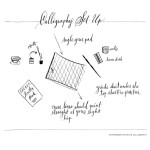
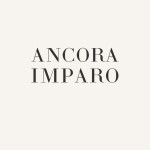
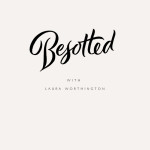
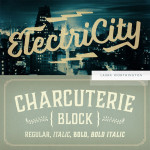
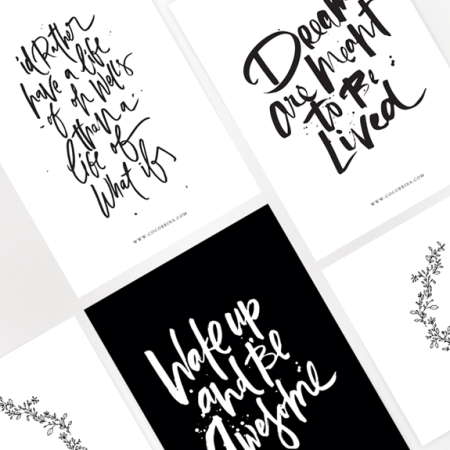
love this, bookmarking, so inspiring
Laura, what awesome information you provide here!! I am overwhelmed by all the work involved in creating a font – I always thought fonts were expensive until I read this! Thank you so much for taking the time to explain your process in developing a new style, it is very helpful for someone new to lettering.
ps considering how little information there is out there about designing fonts, have you considered teaching yourself? I think you would do it wonderfully!
This is awesome! I have no background in lettering, but it’s so wonderful to read about how someone goes through their design process. Thanks for posting this.
wow, this was so informative. i did calligraphy in high school and have always wanted to pick it up again. what an immense amount of work to create a font style for print. so fun reading the process. what a talent!!
Laura’s body of work is quite impressive, I’ve tried the Font Lab software and it is NOT easy!